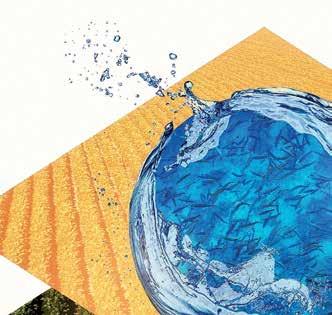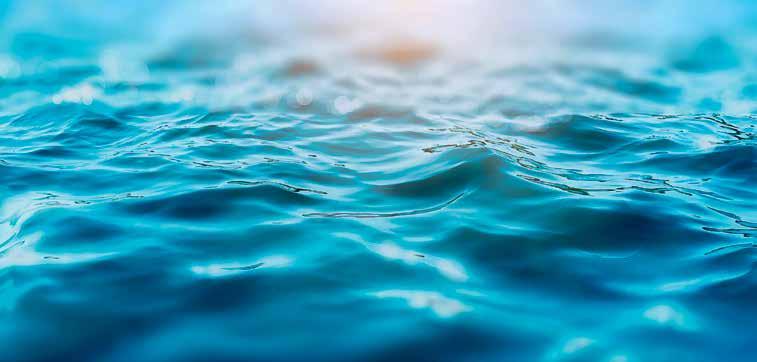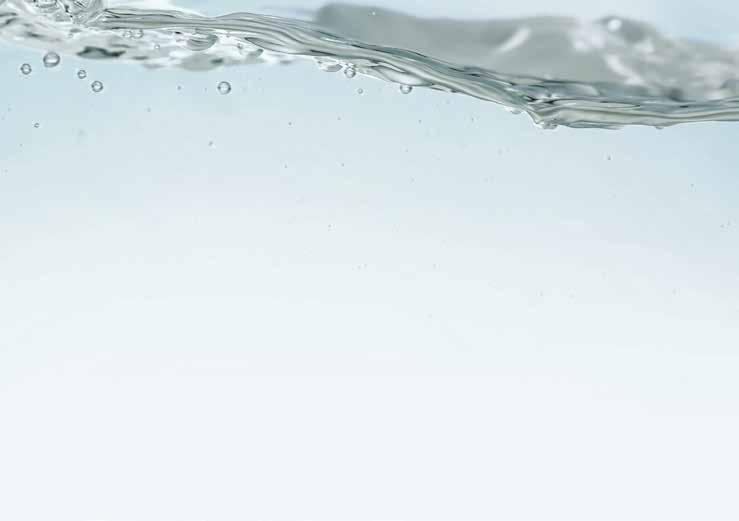
6 minute read
Feed production for organic tiger shrimp farming in Madagascar
Principles – Constraints – Opportunities
By Alexandre Bédier
The shrimp farming industry in Madagascar has been focusing on high-end markets in Europe for decades, generally producing large-sized HOSO (head-on shell-on) shrimp.
Although most of the shrimp farming industry worldwide is on the path of production intensification, several producers take the other route and focus on the rapidly expanding niche organic market. Organic farming is regarded as one of the sustainable ways of farming. In the European Union (EU), it is regulated by Regulations (EC) No 834/2007, (EC) No 889/2008 and the EU import guideline. EU organic farming is not restricted to the EU territories and can be practiced outside its borders by following equivalent standards.
The shrimp farming industry in Madagascar has been focusing on high-end markets for decades, generally producing large-sized HOSO (head-on shell-on) shrimp. Thanks to market opportunities and appropriate farming conditions, most of the farmers have adopted organic shrimp farming. Organic shrimp farming in Madagascar concentrates on farming the black tiger shrimp (Penaeus monodon) which is naturally abundant locally. Farms are geographically isolated in order to offer a clean and undisturbed environment suitable for farming the tiger shrimp according to the EU organic standards. Farmers have to follow rigorous husbandry practices in order to comply with EU organic regulations amongst which is the exclusive use of organic-certified feed.

Located on the nearby French territory Reunion Island, NUTRIMA is the leading shrimp feed supplier for Madagascar. The company supports the Malagasy organic shrimp farmers by providing a reliable supply of tailor-made organic feed. Since organic feed cannot contain preservatives, proximity to the farms enables fast delivery to maintain the feed’s freshness for optimal performance.
Complementary feed in organic shrimp farming
Organic shrimp feed is fundamentally considered as a complementary feed, meaning that the shrimp does not rely exclusively on the feed for its nutrient uptake but has to take advantage of the pond’s natural productivity. In this regard, organic tiger shrimp farming is practiced in natural earthen ponds without bottom liners. In order to comply with the EU standards for organic feed, organic shrimp feed has to be formulated with the following principles in mind:

Animal health and welfare
Shrimp shall be fed with organic feed that meets its nutritional requirements at the various stages of its development. Feed ingredients need to be of natural origin and respect the animal’s propensity to grow in a favourable environment. In this regard, most additives, growth promoters, synthetic amino-acids, preservatives and feed colourants are forbidden. It is therefore necessary to rely only on the benefits offered by selected ingredients.
Animal welfare is also regarded as an important feature of the EU organic standard. In order to limit animal stress, shrimp are stocked at a maximum density of 22 post larvae (PL)/m2 and maximum instantaneous biomass of 240g/m2 in large ponds (5 to 10ha). With fewer shrimp per m2 than in intensive systems, the cultured shrimp are able to access endogenous food sources. The attractability and palatability of organic compound feed must be enhanced to meet the demand of the tiger shrimp.
Eye-stalk ablation is forbidden and broodstock domestication is strongly encouraged. Specific organic broodstock and maturation feeds are necessary to produce organic-certified larvae and guarantee the organic certification during the entire lifecycle of the shrimp.
High shrimp quality (taste and biosecurity)
The nutritional composition of a farmed organic tiger shrimp shall be as close as possible to a wild and healthy tiger shrimp. The shrimp flesh needs to be of high quality (taste, texture) and free of pesticide residues. This is achieved by rigorous controls on the farming site and surroundings; the isolation of Malagasy farming sites further enhances the biosecurity.
Organic shrimp farming is a long-term process and cannot be applied straight away to a farming site. Firstly, non-organic ponds will need to go through a transition period of 6 months during which all organic principles must be applied before an organic certification of harvested shrimp is processed.

It is only after this 6 months transition period (without any certification) that the ponds and the farmed shrimp can then be considered for organic certification. Any failure to maintain the organic standards in ponds results in the downgrading of shrimp into the nonorganic category resulting in major economic losses. As feed is one of the major inputs in ponds and directly affects the quality of shrimp, sourcing feed from a reliable supplier is vital for organic shrimp farmers. To secure its customers and their supply, an organic feed supplier must have absolute control over the organic sourcing and traceability of ingredients. Additionally, its organic feed shall go through an extensive control procedure before being allowed on farms to eliminate the risk of pesticide bioaccumulation in shrimp tissue.
Low environmental impact
Reduced environmental footprint is a keystone of organic farming. The aim is to create a total sustainable farming system with minimum environmental impacts resulting from shrimp farming activities whether on the farming site or in association with the farming operations, such as raw material sourcing.
The destruction of mangroves is strictly forbidden and ponds must be built with the natural pre-existing clay. Fertilisation of organic ponds can only be carried out using natural products, such as non-GMO (nongenetically modified) rice bran and molasses. Chemical fertilisers are forbidden.
The plant fraction of feed shall originate from organic production; they must be non-GMO and free of pesticide residues. Hence, raw materials of plant origin must come with screening analysis reports to prove the absence of pesticide residues and be authorised for organic feed production.


Ingredients derived from marine animals (marine meals, oils, solubles etc.) shall be sourced from sustainable fisheries and be certified by third-party organisations, such as Marine Trust or sourced from organic farming (e.g., fish oil derived from organic salmon). Besides, the EU organic standard aims to limit the inclusion of ingredients derived from marine animals in feed. Inclusion rates range from a maximum of 25% in EU regulations, and up to 35% in third-party organic standards recognised by the EU. Limited use of marine ingredients aims to alleviate pressure on marine wild stocks associated with growing demand as a result of the expansion of global aquaculture.
Production of organic shrimp feed is a painstaking endeavour requiring stringent control management and dedicated strategies. The increasing awareness of consumers towards the environmental footprint and health benefits of their seafood has steadily fuelled the demand for sustainable seafood including shrimp.
In this regard, organic shrimp farming has a role to play. It can shift the lingering perception of a detrimental industry into a sustainable farming activity capable of offering healthy and tasty shrimp even to the most demanding shrimp aficionados.
The EU standards for organic shrimp feed requires use of ingredients originating from organic production, non-GMO and free of pesticide residues. Raw materials of plant origin must come with screening analysis reports to prove the absence of pesticide residues and authorised for organic feed production.
Alexandre Bédier is TechnicalSales Manager at NUTRIMA. Email: alexandre.bedier@nutrima.fr











